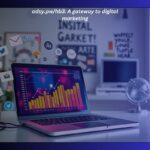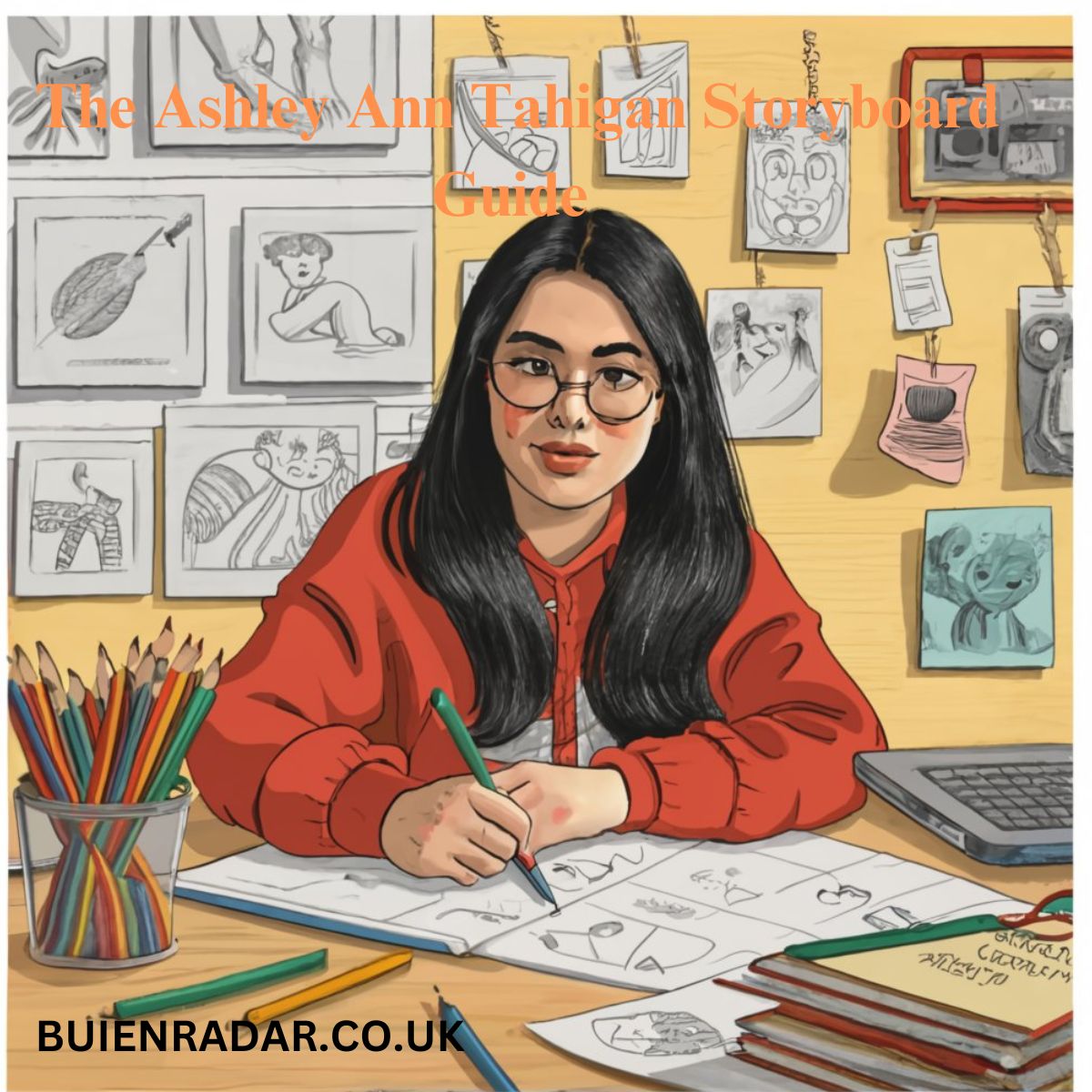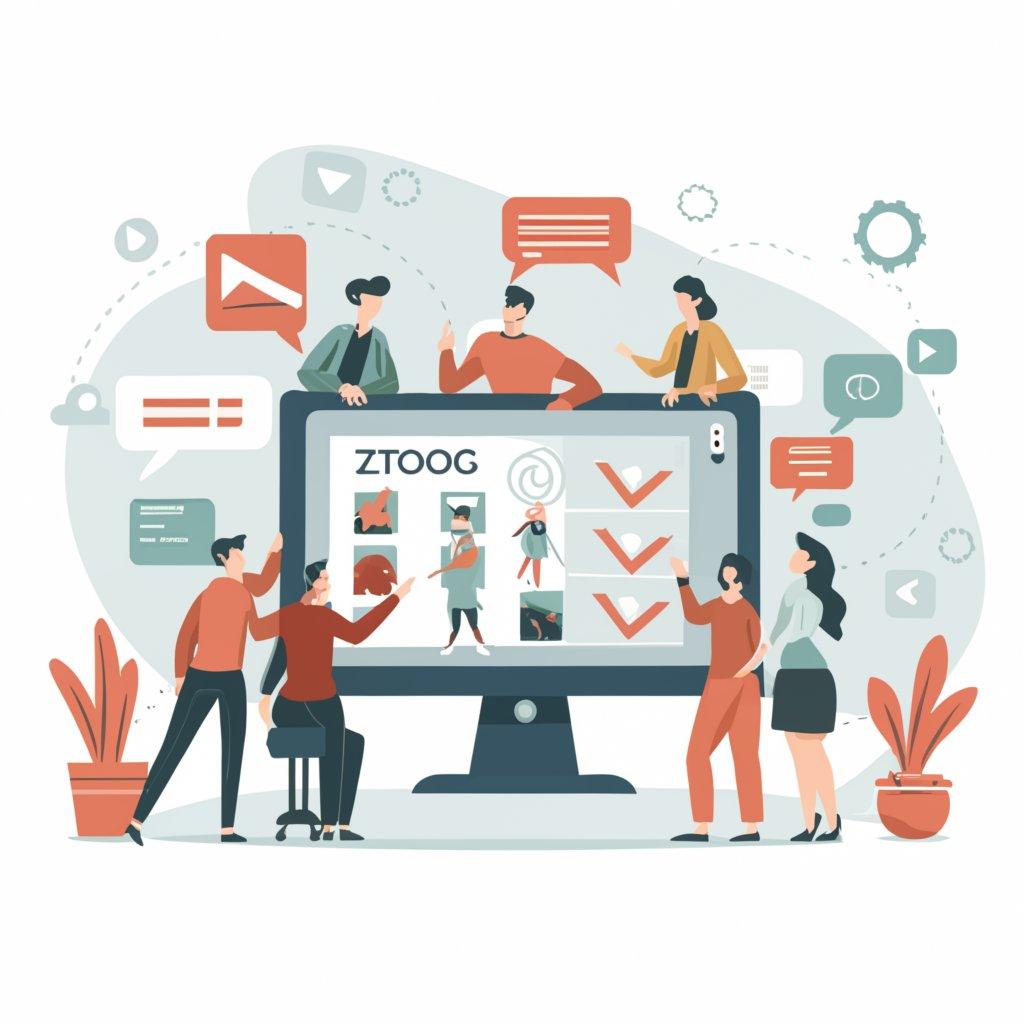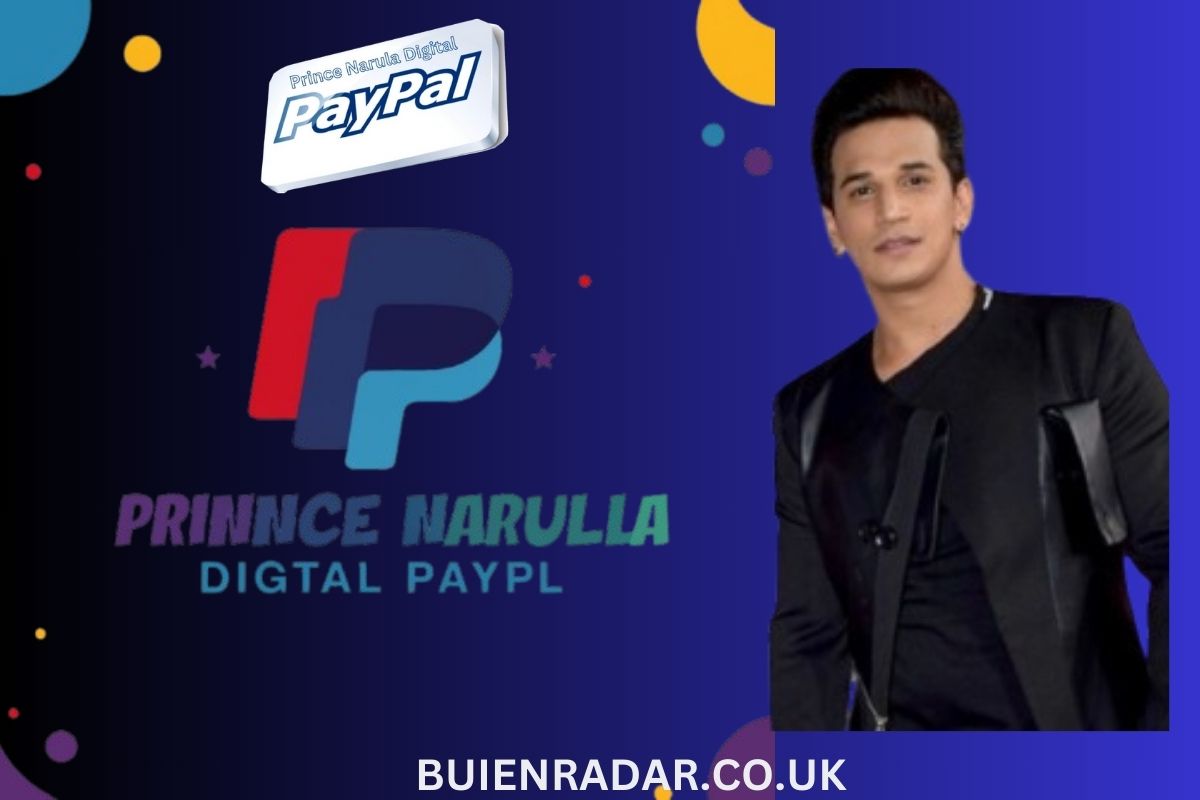Are you ready to embark on a creative journey that transforms your ideas into captivating visual narratives? If so, the Ashley Ann Tahigan Storyboard Guide is your ticket to unlocking boundless creativity. Whether you’re an aspiring filmmaker, a passionate artist, or simply someone looking to express their thoughts visually, storyboarding can elevate your storytelling game significantly.
Imagine having the power to map out every scene in vivid detail before diving headfirst into execution. Picture each frame coming alive with potential and emotion. The art of storyboarding not only helps clarify your vision but also inspires innovative approaches you may never have considered. Dive deep into this guide and discover how Ashley Ann’s techniques can help unleash the storyteller within you!
The Benefits of Storyboarding for Creativity
Storyboarding serves as a powerful tool to channel creativity. It transforms abstract ideas into tangible visuals, making concepts easier to grasp.
By visually mapping out thoughts, you unlock new connections and insights. This process encourages brainstorming and experimentation without the fear of failure.
Additionally, storyboards provide structure. They guide your narrative flow while allowing for flexibility in expression. As you sketch scenes or jot down notes, inspiration often strikes unexpectedly.
Collaborating with others becomes more effective too. A shared visual reference helps communicate ideas clearly. Team members can visualize their contributions easily.
Storyboarding enhances focus and organization in creative projects. With each frame crafted thoughtfully, you’re one step closer to realizing your artistic vision.
The Ashley Ann Tahigan Story: How She Discovered the Power of Storyboarding
Ashley Ann Tahigan’s journey into the world of storyboarding began unexpectedly. A graphic designer by trade, she found herself frustrated when her ideas failed to translate effectively onto paper.
One day, while experimenting with visual layouts for a client project, she stumbled upon a simple technique: sketching out scenes as thumbnails. This method allowed her to visualize each element clearly and connect them in meaningful ways.
As Ashley delved deeper into this practice, she realized that storyboarding helped unlock new levels of creativity. It was more than just planning; it became a form of exploration where her imagination could roam freely.
Through trial and error, she discovered how powerful visuals can be in telling compelling narratives. Each frame captured emotions and tones that words often couldn’t convey alone. This revelation changed everything for Ashley—her work transformed from mundane to mesmerizing.
Step-by-Step Guide to Creating Your Own Storyboard
Creating your own storyboard is an exciting journey. Start with a clear idea of your narrative. Write down the core message you want to convey.
Next, divide your story into key scenes or moments. This will help visualize the flow and structure. Each scene should represent a specific action or emotion.
Then, grab some paper or use digital tools to sketch out each frame. Don’t worry about artistic perfection; focus on capturing the essence of each moment.
Add notes for dialogue, sound effects, and camera angles if relevant. These details enhance understanding and depth in storytelling.
Review your storyboard and make adjustments as necessary. Ensure that it flows smoothly from one scene to another while maintaining clarity in its direction.
Remember, this is just a guideline—let creativity guide you through every step!
Tips and Tricks for Making the Most Out of Your Storyboard
To maximize the potential of your storyboard, start with clear objectives. Define what you want to achieve before putting pen to paper.
Use color coding for different elements. This can help differentiate scenes, characters, or themes at a glance.
Don’t hesitate to sketch loosely. Not every detail needs perfection; quick sketches will allow ideas to flow freely without getting stuck on minor imperfections.
Incorporate notes alongside illustrations. Jot down emotions, dialogue snippets, or special effects that complement each frame and provide context.
Experiment with layout variations. Try horizontal and vertical arrangements to see which best captures the essence of your story.
Revisit and revise regularly. Your initial vision may evolve as new ideas emerge—adaptability is key in creative processes like this one!
Real-Life Success Stories from Using the Ashley Ann Tahigan Storyboard Guide
Many creatives have embraced the Ashley Ann Tahigan Storyboard Guide, and the results speak volumes. Artists, writers, and filmmakers alike have reported transformative experiences after implementing storyboarding into their workflows.
One filmmaker shared how a structured storyboard helped him refine his vision for a short film. By visually mapping out scenes, he identified pacing issues early on. This clarity led to a more engaging narrative that captivated audiences at festivals.
A graphic novelist found inspiration through the guide’s techniques. With each frame thoughtfully laid out, her characters developed depth she hadn’t anticipated. The visual coherence of her story drew readers in from page one.
Even educators are using this approach in classrooms. Teachers utilize storyboarding exercises to foster creativity among students, allowing them to translate ideas into vibrant visuals effectively. Each success underscores how powerful storytelling tools can be in various fields.
Transform Ideas into Visual Masterpieces
Transforming ideas into visual masterpieces begins with clarity. Picture your thoughts, emotions, and concepts vividly. This mental imagery serves as the foundation for your storyboard.
Next comes the sketching phase. Don’t worry about perfection; let your creativity flow freely. Each frame should capture a moment of inspiration, telling parts of a larger story.
Utilize colors, shapes, and textures that resonate with your vision. These elements breathe life into static images and evoke feelings in viewers.
Experimentation is key to discovery. Try different layouts or perspectives until something clicks. Sometimes the wildest ideas yield the best results.
Remember to keep revisiting and refining each section of your storyboard as new insights emerge during this process. The journey itself can inspire unexpected directions you never anticipated at the start!
A Step-by-Step Journey Through Storyboarding
Storyboarding is like embarking on an adventure. It starts with a blank canvas, waiting for your ideas to take shape.
Begin by brainstorming your concept. Jot down key themes and characters that spark excitement in you. This initial stage sets the direction of your story.
Next, sketch out scenes loosely. Focus on flow rather than perfection—stick figures or simple shapes are fine at this stage. Visualize how each scene connects to form a cohesive narrative.
As you progress, refine each frame with more detail, ensuring clarity in action and emotion. Don’t hesitate to rearrange scenes; flexibility can lead to unexpected breakthroughs.
Once satisfied with the sequence, add notes about dialogue or sound effects beneath each panel. These annotations will enhance understanding when it’s time for production.
Embrace feedback as you share your storyboard with others—it opens new perspectives and possibilities for your vision!
Harnessing Imagination for Compelling Narratives
Imagination is the lifeblood of storytelling. It transforms simple ideas into vivid narratives that resonate with audiences. The key lies in tapping into that boundless reservoir within us.
Allow your mind to wander, free from constraints. Take a moment to visualize scenes, characters, and emotions before putting pen to paper or brush to canvas. This mental exploration can unveil unexpected connections and themes just waiting to be discovered.
Engage all your senses. Imagine the sights, sounds, tastes, and textures as you build your narrative world. Each detail adds richness and depth.
Utilize prompts or exercises designed to ignite creativity. They can help generate fresh perspectives when inspiration feels distant.
Let curiosity lead the way; embrace unconventional thinking without fear of judgment. By fostering an environment where imagination flourishes, compelling stories will naturally emerge from within you.
Explore Techniques to Elevate Your Storytelling
Storytelling is an art. To elevate it, consider integrating diverse techniques that captivate your audience.
Start with vivid imagery. Paint scenes that evoke emotion and transport listeners to new worlds. Use sensory details to make the experience immersive.
Next, play with structure. Non-linear timelines can intrigue and surprise, keeping viewers engaged as they piece together the narrative puzzle.
Incorporate character development organically; let their flaws make them relatable. Highlight moments of vulnerability to foster connection.
Don’t shy away from dialogue either. Authentic conversations breathe life into characters and drive the plot forward in unexpected ways.
Experimenting with pacing also works wonders; speed up during action for adrenaline or slow down for moments of reflection, allowing emotions to resonate deeply.
These techniques not only enhance storytelling but create a rich tapestry that invites your audience into your creative vision.
Bringing Your Vision to Life, One Frame at a Time
Bringing your vision to life requires meticulous attention to detail. Each frame in a storyboard acts as a building block for your creative narrative. This process allows you to visualize how each scene unfolds.
Imagine sketching out characters, settings, and pivotal moments. You create a roadmap of sorts—a guide that leads you from concept to execution. It helps clarify your thoughts and reveals gaps in the storyline before diving into production.
Experiment with color palettes and composition within each frame as you refine your ideas. These elements enhance emotional resonance and drive engagement with your audience.
Every stroke on paper is an opportunity—an invitation for innovation. Embrace spontaneity during this phase; sometimes, the best ideas surface unexpectedly when you’re least prepared.
With patience and creativity, watch as individual frames transform into compelling visual stories that captivate hearts and minds alike.
Unlocking the Secrets of Effective Storyboarding
Unlocking the secrets of effective storyboarding begins with understanding your narrative’s core. What emotions do you want to evoke? Identifying this will guide your visual choices.
Next, create a clear structure. Think in terms of beginning, middle, and end. Each frame should represent a pivotal moment in your story’s journey.
Don’t shy away from experimenting with styles and layouts. Sometimes unconventional methods yield the most surprising results. Allow yourself to play—this is where innovation thrives.
Utilize color palettes thoughtfully; colors carry emotional weight that can enhance or detract from your message.
Collaboration can unlock new perspectives. Share drafts with peers or mentors for feedback that might spark further creativity. Embrace their insights while keeping true to your vision as you transform ideas into vivid scenes on paper or screen.
From Inspiration to Execution: Your Creative Toolkit
Every creative journey begins with a spark of inspiration. It’s that fleeting moment when ideas start to flow, but capturing them can be challenging. This is where your creative toolkit comes into play.
A storyboard serves as the bridge between concept and execution. Each frame allows you to visualize scenes and emotions, giving structure to your thoughts. Pencil sketches or digital apps can help bring each idea into focus.
Include elements like color palettes, character sketches, and mood boards in your toolkit. These enhance visual storytelling by providing context and depth.
Don’t forget about brainstorming techniques such as mind maps or bullet journaling. They encourage free-flowing thought and reveal connections you might not have noticed before.
An effective toolkit enables creativity to flourish from mere concepts to tangible realities filled with potential.
Empower Your Projects with Ashley Ann’s Proven Strategies
Empowering your projects starts with understanding the core of storytelling. Ashley Ann’s proven strategies highlight that every narrative has a unique heartbeat.
By utilizing her storyboard guide, you can visualize complex ideas effortlessly. This clarity allows for better decision-making and enhances collaboration among team members.
Incorporating visual elements helps to identify gaps in the story flow early on. It transforms abstract concepts into tangible layouts, making it easier to communicate your vision.
Additionally, Ashley encourages iterative feedback throughout the process. This strategy fosters an environment where creativity thrives and innovation flourishes.
Embrace these techniques as you embark on your creative journey. You’ll find yourself equipped with tools that not only empower but also inspire confidence in your storytelling capabilities.
Crafting Compelling Visual Stories from Scratch
Crafting compelling visual stories from scratch is an art form that requires both imagination and method. Start by brainstorming themes or concepts that resonate with you. Jot down your thoughts without restriction.
Next, visualize the narrative flow. Imagine how each scene connects to build tension or evoke emotion. Sketch rough drafts of your ideas; don’t worry about perfection at this stage.
Colors play a vital role in storytelling. Choose palettes that enhance the mood—vivid hues can energize, while muted tones may evoke nostalgia.
Consider character development as well. Strong characters draw audiences in and create emotional investment. Explore their journeys through visuals rather than just words.
Experiment with composition techniques like framing and perspective to add depth to your scenes. Each frame should invite viewers into your world, sparking curiosity and engagement along the way.
Innovative Techniques to Inspire Your Next Project
Exploring innovative techniques can breathe new life into your projects. One method to consider is the use of mind mapping. This visual tool allows you to branch out ideas freely, capturing thoughts as they flow.
Another approach involves collaborative brainstorming sessions. Gathering diverse perspectives creates a rich tapestry of inspiration and encourages unique solutions.
You might also try integrating multimedia elements into your storyboarding process. Combining audio clips or video snippets can spark fresh ideas and enhance emotional engagement.
Don’t shy away from experimenting with unconventional materials like fabric or recycled objects for prototyping visuals. Physical interaction often leads to unexpected insights.
Immerse yourself in nature or art museums regularly. Sometimes stepping outside your routine is all it takes for creativity to flourish anew, serving as a fertile ground for inspiration that transforms vague concepts into tangible stories.
Visual Storytelling: The Key to Engaging Audiences
Visual storytelling is an art that transcends mere words. It captures attention and evokes emotions through imagery, color, and composition.
Each frame tells a part of the story. When combined, they create a powerful narrative that resonates with audiences on multiple levels. This approach allows creators to convey complex ideas clearly and memorably.
In our fast-paced digital world, visuals grab attention quicker than text alone. Infographics, illustrations, or photographs can communicate messages instantly. They invite viewers to engage deeply while sparking curiosity about the content.
Effective visual narratives not only inform but also inspire action. Whether in marketing campaigns or personal projects, strong visuals leave lasting impressions that compel audiences to connect further with the message being shared.
Embracing this technique opens doors for creativity and innovation in storytelling across various mediums.
Building Your Storyboard: A Blueprint for Success
Building your storyboard is like laying the foundation for a house. It requires careful planning and an understanding of what you want to create.
Start with a clear vision. What story are you telling? Define your main characters, setting, and plot points before sketching anything out. This clarity will guide your artistic choices.
Next, choose your medium—digital tools or good old-fashioned paper work well. Don’t be afraid to experiment as you play with layouts and visuals that resonate with your narrative.
Incorporate notes alongside images to highlight key dialogue or themes. These annotations breathe life into static frames, helping convey emotions effectively.
Review and revise regularly. A storyboard isn’t set in stone; it evolves just like any creative project does. Embrace flexibility as you refine each scene until it aligns perfectly with your original concept.
Explore the Intersection of Art and Narrative
Art and narrative intertwine in a dance that breathes life into ideas. Each brushstroke or pencil line carries a story, transforming blank canvases into vibrant worlds.
When you harness this connection, your storytelling transcends mere words. Visual elements enrich the plot, offering viewers an immersive experience.
Consider how colors evoke emotions or shapes suggest movement. By merging art with narrative, you create layers that invite deeper engagement from your audience.
This intersection is not just for artists; it’s a playground for anyone who wishes to communicate more powerfully. Whether through photography, illustration, or design, each medium provides unique avenues for storytelling.
Embrace the synergy of visual and verbal language to elevate your projects. The possibilities are endless when imagination meets innovation at this creative crossroads.
Unlocking Potential: Creative Exercises for Every Level
Unlocking your creative potential requires consistent practice and exploration. No matter your skill level, there are exercises that can help spark new ideas.
Start with simple prompts. Write down random words or phrases, then create a story connecting them. This exercise encourages out-of-the-box thinking.
Another effective method is visual brainstorming. Grab a sketchbook and doodle whatever comes to mind without overthinking it. Let the images guide you towards new concepts.
Try collaborating with others too. Sharing thoughts in a group can lead to unexpected insights and fresh perspectives.
Embrace constraints by setting specific rules for your projects—like limiting colors or themes. Restrictions often fuel innovation by pushing you beyond comfort zones.
Engage regularly in these activities to build confidence and discover unique ways of expressing your vision.
Navigating the Storyboard Landscape with Confidence
Navigating the storyboard landscape can feel daunting, but it doesn’t have to be. Embrace the process as an adventure rather than a chore.
Start by familiarizing yourself with various storyboard formats. Each style has its own strengths and applications, which can enhance your storytelling approach. Experimentation is key.
Trust your instincts when choosing characters and scenes. Your unique perspective adds depth to every visual element you create.
As you sketch out ideas, remember that flexibility is crucial. Be open to changes in direction; sometimes the best stories emerge from unexpected twists.
Collaboration also plays a vital role in building confidence in storyboarding. Share your work with others for feedback or inspiration—fresh eyes can illuminate new possibilities.
Keep pushing boundaries within this creative realm, and allow yourself to grow through each project you undertake.
Strategies for Developing Unique Visual Narratives
Crafting unique visual narratives requires thinking outside the box. Start by exploring diverse art forms. Film, painting, and photography can inspire fresh ideas.
Embrace experimentation. Mix styles or techniques to create something distinct. Don’t shy away from blending traditional methods with modern technology. This fusion often leads to innovative results.
Consider your audience’s perspective. What emotions do you want them to feel? Tailor visuals that resonate on a personal level, evoking curiosity or nostalgia.
Story arcs are essential too. Develop characters and settings that captivate viewers while maintaining coherence in your narrative flow.
Gather feedback early in the process. Different perspectives can unveil new pathways for storytelling that you might have overlooked initially. Use this input as a springboard for further creativity; it’s all part of evolving your narrative style.
Conclusion: Unleash Your Creative Potential with Storyboarding
Harnessing the power of storyboarding can transform your creative process. It’s more than just a planning tool; it’s a bridge to your imagination.
Every frame you sketch breathes life into ideas. Each box holds potential, urging you to explore narratives in fresh and engaging ways.
The Ashley Ann Tahigan Storyboard Guide offers techniques that cater to various skill levels. Whether you’re an experienced artist or a novice storyteller, there’s something here for everyone.
Dive deep into visual storytelling. Experiment with colors, shapes, and characters that resonate with your vision.
Let each storyboard be an adventure where creativity knows no bounds. Embrace this journey as a chance to elevate every project from concept to execution.
Open up new avenues for inspiration and expression through the art of storyboarding. Your unique voice deserves to shine brightly in every narrative you create.
FAQs About The Ashley Ann Tahigan Storyboard Guide
What is the Ashley Ann Tahigan Storyboard Guide?
The Ashley Ann Tahigan Storyboard Guide is a comprehensive resource designed to help individuals harness their creativity through effective storyboarding techniques. It provides step-by-step instructions, tips, and real-life examples of how storyboards can enhance storytelling.
How can storyboarding benefit my creative process?
Storyboarding allows you to visualize your ideas and plan your projects more efficiently. It helps organize thoughts, identify potential challenges early on, and create a clear roadmap for execution. This visual approach often leads to more innovative solutions.
Do I need any special skills or tools to start storyboarding?
No special skills are required! You can begin with simple materials like paper and pencils or digital tools if you prefer. The key is finding what works best for you in visualizing your concepts.
Can beginners use the Ashley Ann Tahigan Storyboard Guide?
Absolutely! The guide caters to all skill levels, providing exercises that progressively build confidence and the ability to create compelling narratives through storyboard techniques.
What kinds of projects can benefit from using a storyboard?
Any project that involves storytelling—whether it’s filmmaking, marketing campaigns, writing novels, or even personal presentations—can greatly benefit from an organized storyboard approach.
How long does it take to create an effective storyboard?
The time varies based on complexity. Simple projects may take just an hour or two while more intricate narratives could require multiple sessions over days or weeks. It’s important not to rush; allow yourself time for refinement.
Where can I find additional resources on storyboarding?
Many online platforms offer tutorials and templates specifically focused on storyboarding. Additionally, books about visual storytelling provide valuable insights into advanced techniques used by professionals across various industries.
By exploring these questions further, you’re taking meaningful steps toward unlocking your creative potential through the art of storyboarding.
FOR FURTHER INFORMATION VISIT: BUIENRADAR.CO.UK











